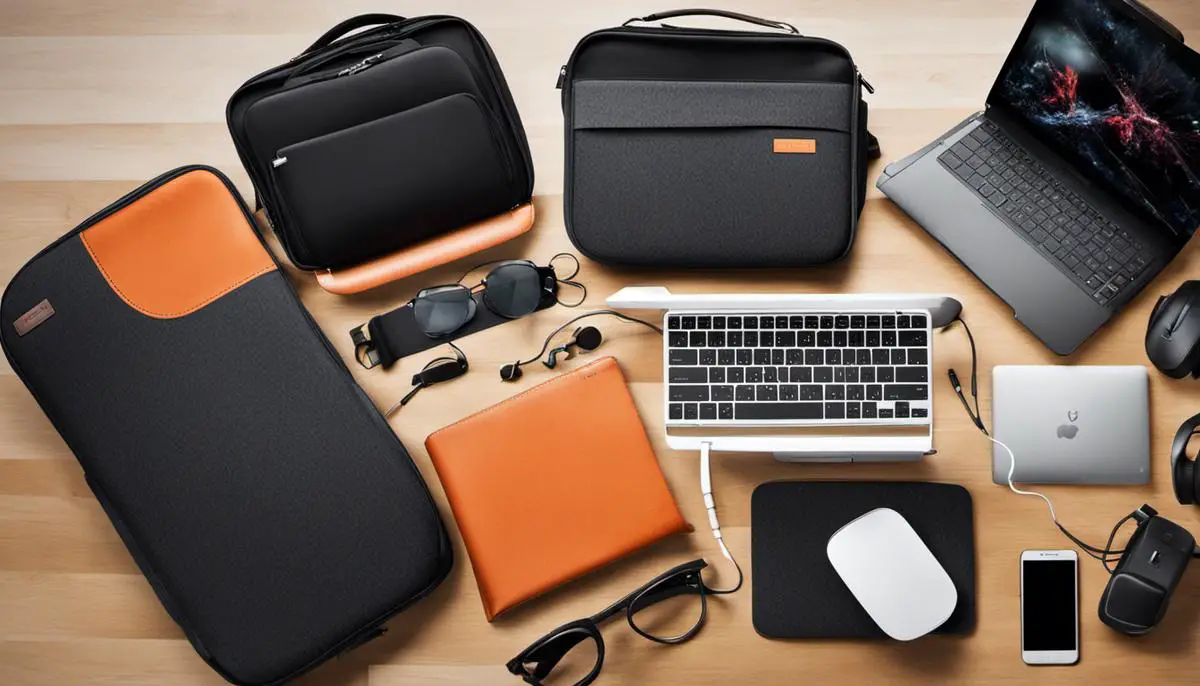Welcome to the unvarnished truth about laptop ownership. As a seasoned IT professional with years of experience in the tech industry, I’ve seen firsthand the unexpected expenses that can sneak up on unsuspecting laptop owners.
Sure, the initial price tag can seem steep, but it’s only the tip of the iceberg. What lies beneath are the hidden costs—software upgrades, maintenance, accessories, potential repairs—that can add up quickly.
- Hidden Costs of Computing: The Initial Investment
- Software and Accessories: The Hidden Costs Beyond the Box
- Maintenance and Repairs: The Hidden Costs Cloaked in Essentials
- Upgrades and Performance Enhancements: The Hidden Costs Masked in Progress
- Energy Consumption: The Hidden Costs in the Current
- Data Storage: The Hidden Costs in Safeguarding Your Digital Assets
- Internet Connectivity: The Hidden Costs in Staying Connected
- Extended Warranties and Insurance: The Hidden Costs in Protecting Your Investment
- Peripheral Devices: Enhancing Your Experience at an Additional Cost
- Acknowledging the Details: Yes, Every Little Cost Adds Up in Laptop Ownership
- Summary
In this article, we will dive into these sneaky expenses, backed by real-life examples and practical tips, to help you fully understand and prepare for the true cost of owning a laptop.
Hidden Costs of Computing: The Initial Investment
When discussing the hidden costs of laptop ownership, the conversation must start at the beginning – the initial investment.
The upfront cost of purchasing a laptop can be a substantial part of your total cost. Depending on your needs and preferences, you could be looking at a range that extends from a few hundred to several thousand dollars.
Let’s dissect this aspect further:
Price Range and Its Implications
Depending on your needs and preferences, the price range for a laptop can vary widely. You could be looking at:
- Budget Laptops: These usually fall in the bracket of a few hundred dollars. They are good enough for basic tasks such as browsing and document editing but may falter with high-end tasks like gaming or video editing. For example, a budget laptop priced around $300.
- High-Performance Laptops: These are the heavy hitters, equipped to handle demanding tasks. However, these come with a hefty price tag of $2000 or more.
The price range you opt for has a direct bearing on the laptop’s performance and quality. But remember, this initial cost is just the start.
Own a gaming laptop? Read: The Price of Power: Understanding the Costs of Gaming Laptops
Hidden Costs: Beyond the Initial Investment
The initial investment is just the tip of the iceberg. There are numerous other hidden costs associated with laptop ownership. It’s essential to consider these as you budget for your new technological companion.
In the upcoming sections, we will dive deeper into these hidden costs to give you a comprehensive picture of laptop ownership.
Software and Accessories: The Hidden Costs Beyond the Box
Once you bring home a shiny new laptop, you quickly realize that the initial outlay isn’t the whole story. Besides the obvious physical asset, there’s an entire ecosystem of software and accessories that you’ll need to maximize the utility of your purchase.
Software: Specialized Programs and Subscriptions
Most laptops come with a basic set of pre-installed software. However, these bundled applications often fall short of meeting specific requirements, such as graphic design, video editing, or gaming. That’s where additional software comes in.
These specialized programs range from free to thousands of dollars, depending on their sophistication and the reputation of the provider.
- For instance, a full Adobe Creative Suite subscription, a must-have for many creatives, can set you back $52.99 per month.
- On the flip side, free alternatives like GIMP and Inkscape offer a decent range of features for beginner to intermediate users.
Accessories: Necessary Additions
And then, there are the accessories. From a sturdy case that protects your laptop from accidental drops to the HDMI cables that help you connect to larger screens, to the cooling pads that keep your laptop’s temperature in check during intense gaming sessions, these add-ons do add up.
While not as hefty as your software investments, these expenses are often overlooked during the initial budgeting phase.
A Case Study: The Real Cost of Ownership
To illustrate, consider my friend Julie’s experience. Last year, she invested in a high-performance laptop for her graphic design work. Initially, she was thrilled with the specs but hadn’t accounted for her Adobe subscription or the Wacom tablet she needed for her designs. Ultimately, her total costs nearly doubled after purchasing all the required software and accessories.
Keep in mind that the true expenses of owning a laptop go well beyond the initial price tag. However, that’s not all – continue reading to discover the additional costs associated with laptop ownership.

Maintenance and Repairs: The Hidden Costs Cloaked in Essentials
It’s easy to overlook the costs of maintaining and repairing your laptop, yet these are integral to the laptop ownership journey. Let’s peel back these hidden layers:
Regular Maintenance: The Price of Smooth Operations
Regular maintenance tasks are necessary to keep your laptop running smoothly. These include:
- Software updates: Updating your operating system, drivers, and applications ensures your laptop remains optimal and secure. While system updates are typically free, some software applications may charge for major upgrades.
- Antivirus subscriptions: Protecting your laptop from malware and viruses is crucial. Good antivirus software can be a lifesaver, but it also comes with a price tag. Expect to pay anywhere from $20 to $100 per year for a reliable antivirus subscription.
Repair Costs: The Price of Accidents and Hardware Failures
Laptops, just like any other electronic device, are prone to hardware failures and accidents. These could be as minor as a few stuck keys, or as major as a cracked screen or a dead battery. In such cases, you’ll need to shell out for repairs.
- Screen replacements: If you’ve ever cracked a laptop screen, you know it’s not cheap to replace. Depending on the make and model of your laptop, a screen replacement can cost between $80 to $250.
- Battery replacements: Laptop batteries tend to degrade over time. Depending on your laptop, a new battery can cost anywhere from $50 to $150.
To demonstrate, let’s look at my own experience. A few years back, my laptop’s hard drive failed unexpectedly. The replacement cost ended up being over $200 – an expense I hadn’t planned for.
Considering these costs can equip you with a realistic picture of laptop ownership, helping you budget better. Read on for more hidden costs to watch out for in your laptop usage journey.
Upgrades and Performance Enhancements: The Hidden Costs Masked in Progress
Advancements in technology are swift and relentless, often rendering our devices outdated within a few years. As software becomes more sophisticated, the hardware demands increase, and your laptop might struggle to keep up with these new requirements.
At this point, you’re left with two options – either purchase a new laptop or upgrade your current one. Let’s dig into the costs associated with upgrading components.
The Price of Technological Progress: RAM and Storage Upgrades
To keep your laptop performing optimally, you might need to boost its RAM or storage capacity. Additional RAM can significantly improve the laptop’s performance, especially if you’re running resource-intensive applications.
A storage upgrade, on the other hand, offers more space for your files and can also enhance your laptop’s speed if you opt for a solid-state drive (SSD) over a traditional hard disk drive (HDD). However, these upgrades come at a price.
- RAM upgrades: Adding more RAM can cost anywhere between $30 to $150, depending on the type and capacity of the RAM module.
- Storage upgrades: Similarly, if you’re looking to upgrade your hard drive, an SSD can set you back anywhere from $50 for a basic 128GB model to $300 or more for a high-performance 1TB SSD.
Drawn from my personal experience, I once had to upgrade my laptop’s RAM to keep up with the increased demands of my video editing software. I hadn’t initially accounted for this, and it added an unexpected $120 to my laptop-related expenses.
Also Read: How To Upgrade RAM On A Laptop
So, while upgrades and enhancements can boost your laptop’s performance and extend its lifespan, they are additional costs that often fly under the radar when calculating the total cost of laptop ownership. Keep reading to uncover more hidden costs that come with owning a laptop.
Energy Consumption: The Hidden Costs in the Current
Laptops, being electronic devices, consume a considerable amount of energy. The costs related to energy consumption might not be instantly noticeable, yet they are an integral part of the total cost of ownership. Let’s dive into these often-overlooked costs:
Charging Costs: The Silent Drain on Your Wallet
Charging your laptop is a daily routine, and while it may seem inconsequential, the electricity costs can add up over time. On average, charging a laptop can cost anywhere between $0.50 to $1.50 per month, depending on the power consumption of the laptop and the electricity rates in your region.
Energy Consumption During Use: The Invisible Expense
The power demand of your laptop isn’t limited to charging time. It continues to draw power while in use, notably when running high-intensity tasks like gaming or video editing. These activities can significantly increase your laptop’s energy consumption, and hence, your electricity bill.
Becoming aware of these energy-related costs allows you to factor them into your laptop ownership budget. It also reminds us of the environmental implications of our digital behavior, encouraging us to use energy more mindfully. Continue reading to discover more hidden costs in the realm of laptop ownership.
Data Storage: The Hidden Costs in Safeguarding Your Digital Assets
Data backup is a crucial aspect of laptop ownership, often unnoticed until faced with a data loss conundrum. There are primarily two ways to back up your data: External Hard Drives and Cloud Storage. Both options come with their own set of costs.
External Hard Drives: The One-Time Investment
External hard drives are physical devices that you purchase once and can use for years. They are perfect for storing large files, such as movies or video projects, that don’t necessarily need to be accessed from multiple locations. Let’s talk about the costs:
- Hard Drive Purchase: A good external hard drive can cost anywhere from $50 for a basic 1TB model, to over $300 for a high-performance 8TB device.
- Maintenance: While generally low-maintenance, external hard drives can fail, much like any other electronic device, so it’s advisable to have a backup for your backup.
Cloud Storage: The Recurring Expense
Cloud storage, on the other hand, is a service that you rent, typically on a monthly or annual basis. It’s excellent for accessing documents across multiple devices, sharing files with others, and protecting against local hardware failures. Here’s what you should budget for:
- Subscription Fee: This varies greatly based on your chosen provider and required storage space. Popular services like Google Drive, Dropbox, or iCloud offer plans starting from around $2/month for 100GB, going up to $10/month for 2TB.
- Data Transfer Costs: Depending on your internet plan, uploading and downloading large quantities of data might incur additional charges.
It’s important to remember that, while laptops come with built-in storage, this will fill up quickly, especially if you’re dealing with large files or data-rich applications. So, consider these data storage costs a part of your laptop ownership budget – they’re essential for safeguarding your digital assets.
Pro Tip: Regularly check your laptop’s storage status. A laptop with filled-to-brim storage is likely to perform slower. Ensure to clean up unnecessary files and optimize your storage practices for the best laptop performance.

Internet Connectivity: The Hidden Costs in Staying Connected
Having a laptop without internet connectivity is like having a sports car with no fuel; you simply won’t be able to utilize it to its full potential. From web browsing and email to cloud-based applications and streaming services, the internet has become an essential part of our laptop use. Let’s explore the costs associated with maintaining that vital connection:
Monthly Internet Service Provider (ISP) Fees: The Gateway to the Digital World
ISP Subscription: Your ISP is your gateway to the internet, and this access comes with a recurring monthly fee. The cost varies widely, depending on your location and the speed you require. On average, you could be looking at anywhere from $30 to $60 per month for a basic broadband package, and up to $100 per month for a high-speed fiber-optic connection.
Additional Costs: Some ISPs charge extra for installing the service, and renting equipment such as modems or routers, and may also have hidden fees in their contracts. It’s crucial to fully understand the terms before signing up.
Data Caps: Many ISPs have a data cap on their plans. If you exceed this limit, which can be easily done with frequent downloading or streaming, you may be charged extra or your connection speed may be throttled.
Interesting fact: Did you know that South Korea has the world’s fastest average internet connection speed? The United States, on the other hand, doesn’t even make it into the top 10.
The cost of internet connectivity is a significant part of laptop ownership that often gets overlooked.
Extended Warranties and Insurance: The Hidden Costs in Protecting Your Investment
Choosing to purchase extended warranties or insurance policies for your laptop represents an additional hidden cost of laptop ownership. These protection plans can provide peace of mind but can also considerably inflate the overall expenditure. Let’s break this down:
Extended Warranties: The Shield Against Unexpected Failures
Extended warranties cover repair or replacement costs that may arise due to hardware or software failure beyond the manufacturer’s standard warranty period. Here’s what you need to know:
- The Cost: Depending on your laptop’s make and model, an extended warranty can range from $100 to over $400.
- The Coverage: While they do offer increased protection, these warranties often come with a list of exceptions. Always read the fine print.
Insurance: The Guard Against Theft and Damage
Laptop insurance covers repair or replacement costs due to theft, accidental damage, and sometimes, mechanical failure. Here’s what it entails:
- The Cost: Laptop insurance can range from $50 to $600 per year, depending on the level of coverage and deductible.
- The Coverage: Just like extended warranties, insurance policies can have exclusions. Always check what is and isn’t covered.
While these options can provide security, it’s essential to consider their cost-effectiveness. Sometimes, setting aside an emergency repair fund may serve you better in the long run.
Pro Tip: Keep track of your laptop’s health and maintenance needs. Regular tune-ups can prolong its life, reducing the need for costly repairs or replacements.
Peripheral Devices: Enhancing Your Experience at an Additional Cost
While laptops are designed to be standalone devices, many of us opt for additional peripherals to enhance our computing experience. Whether it’s for comfort, functionality, or to create a more desktop-like setup, these devices add yet another layer to the cost of laptop ownership. Here’s a detailed breakdown:
External Mouse: Enhancing Navigation
An external mouse can be a significant upgrade from your laptop’s touchpad, especially if you’re into graphic design or gaming.
- The Cost: A basic wired mouse can cost as little as $10, while a high-end wireless gaming mouse can set you back up to $150.
- Consider this: Do you find the touchpad limiting or uncomfortable for extended use? If yes, an external mouse might be a worthwhile investment.
External Keyboard: Boosting Typing Efficiency
Some people find laptop keyboards cramped or lacking in tactile feedback. An external keyboard can provide a more comfortable typing experience.
- The Cost: Prices vary widely based on the type and brand, ranging from $15 for a basic model, up to $200 for a premium mechanical keyboard.
- Consider this: If you spend a lot of time typing or just prefer the feel of a full-sized keyboard, this could be a sound investment.
Monitor: Expanding Your Visual Workspace
An external monitor can give you a larger screen real estate, which is especially useful if you’re multitasking or working with graphics.
- The Cost: Depending on the screen size and resolution, monitors can range from $100 for a basic 21″ HD model, to over $1000 for a 32″ 4K display.
- Consider this: If your laptop screen feels restrictive and you regularly work with multiple windows, investing in an external monitor could enhance your productivity and comfort.
Remember, while none of these peripherals are strictly necessary, they can significantly enhance your laptop experience. Just keep in mind that these ‘optional extras’ do add to the overall cost of owning a laptop.
Pro Tip: Before purchasing any peripherals, consider your needs, workspace, and budget. Remember, the most expensive option isn’t always the best for your specific needs. Shop around, read reviews, and make an informed choice.

Acknowledging the Details: Yes, Every Little Cost Adds Up in Laptop Ownership
I acknowledge that I may have been overly meticulous in this article, but all the aforementioned points outlined in this piece do accumulate. Even if they appear minor or inconsequential individually, their cumulative impact is significant.
Upfront Costs vs. Long Term Spend: The Balancing Act of Laptop Ownership
When purchasing a laptop, it’s easy to focus on the upfront cost—the price tag on the device itself. However, as this article has outlined, the long-term spending associated with laptop ownership often exceeds the initial expense.
Upfront Costs: This is the immediate cost you incur when you buy your laptop. It includes the price of the laptop along with any additional accessories or peripherals you purchase at the same time.
For instance, if you bought a laptop for $1,200, a mouse for $20, and an external keyboard for $50, your upfront cost would be $1,270. This is a one-time cost, but it’s a significant investment.
Long-Term Spend: These are the ongoing costs associated with owning a laptop. They include internet connectivity, extended warranties, insurance, and the eventual need to replace peripherals or the laptop itself.
For instance, if your internet plan costs $50 per month, your insurance is $100 per year, and you replace your laptop every four years, your long-term spend over four years would be $2,500 (excluding any additional costs for peripheral replacement or repair costs not covered by your insurance).
While the upfront cost is a one-time hit to your wallet, the long-term spend continues throughout the life of your laptop. It’s essential to consider both when budgeting for a laptop. While a higher upfront cost may seem daunting, it may result in lower long-term spending if it means less need for repairs or a longer lifespan for the machine.
Pro Tip: Consider both the upfront costs and long-term spending in your budgeting. It might make more sense to invest in a quality laptop with a higher upfront cost if that means lower maintenance and replacement costs down the line. Remember, laptop ownership isn’t just about the purchase price—it’s a long-term investment.
Common Mistakes in Calculating the Total Cost of Ownership (TCO)
Many laptop owners often underestimate the true cost of their device by making certain common mistakes while calculating their Total Cost of Ownership (TCO). Here are some of the most frequent errors:
- Overlooking the cost of software: Many people forget to consider the cost of the software they need to run on their laptops. Whether it’s productivity software like Microsoft Office, design programs like Adobe Creative Suite, or even antivirus software, these costs can add up significantly over time.
- Disregarding energy usage: Laptops consume electricity, and while it may not seem much per hour, it does add up over the life of your laptop. This is especially true for high-performance laptops which are more power-intensive.
- Ignoring the cost of consumables: This includes items like printer ink if you’re using your laptop for printing, or even accessories like laptop cases or cooling pads.
- Forgetting the cost of time: If your laptop is slow or constantly needs repairs, the time you lose can be a significant hidden cost. Time is money, after all.
- Not considering the cost of data plans: If you use your laptop on the go and often tether your phone’s data, this could lead to higher phone bills, an often overlooked aspect of laptop ownership.
The Snowball Effect: Rising Costs of Aging Laptop Hardware
The lifespan of a laptop can be impacted by numerous factors, from the quality of components to the intensity of use. However, holding onto an aging laptop can often lead to a snowball effect of escalating costs. Let’s look at some of the specific areas where you might end up spending more than you expect.
1. Increased Repair Costs: As laptops age, components wear out, and the likelihood of failure increases. This can result in frequent and costly repairs. For instance, replacing a failed hard drive might cost you around $100, but if you need to replace the motherboard, you could be looking at $300 or more.
2. Software Incompatibility: Older laptops might not support newer versions of software, forcing you to either stick with outdated and potentially insecure versions or purchase new hardware. This could compromise your productivity or data security.
3. Reduced Productivity: Aging laptops often run slower, leading to longer load times and reduced productivity. If your work depends on your laptop’s performance, this factor alone could justify an upgrade.
4. Higher Energy Consumption: Older laptops tend to be less energy efficient than newer models, leading to higher electricity costs over time.
5. Obsolescence: Technology advances quickly, and it’s possible your older laptop may not have the capabilities to keep up with newer software or peripherals. This could lead to additional costs as you buy more up-to-date hardware.
Pro tip: As a rule of thumb, if the cost of repair is more than half the cost of a new laptop, or if the laptop is more than three years old, it’s usually more cost-effective to replace it. Remember to factor in these potential costs when considering the total cost of laptop ownership.

Summary
In conclusion, the total cost of laptop ownership extends far beyond the initial purchase price, encompassing long-term expenditures like software costs, energy consumption, hardware repairs, data plans, and time lost due to reduced performance.
Therefore, it’s crucial to consider these hidden costs before making a purchase. Investing in quality hardware upfront can save you money in the long run, leading to lower maintenance costs and a longer laptop lifespan.
Understanding the full scope of this investment allows you to make informed decisions, ensuring you get the most value out of your technology.

J.S. is the owner, content creator, and editor at Upgrades-and-Options.com. I’ve worked in the IT and Computer Support field for over 20 years. The server hardware in my computer labs has mostly been IBM, but I’ve supported Dell, HP, and various other hardware. In addition, as part of my lab administrator responsibilities, I’ve learned, supported, and repaired/upgraded network hardware such as Cisco routers and switches. READ FULL BIO >>


